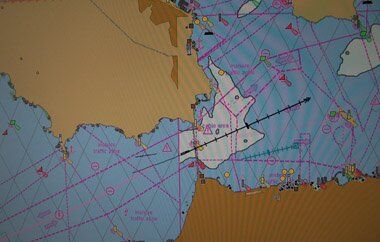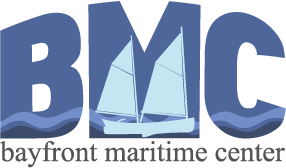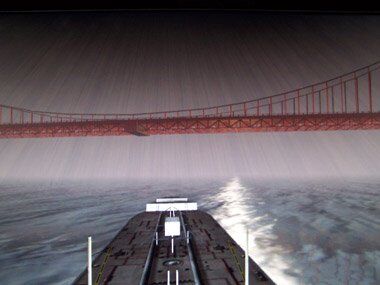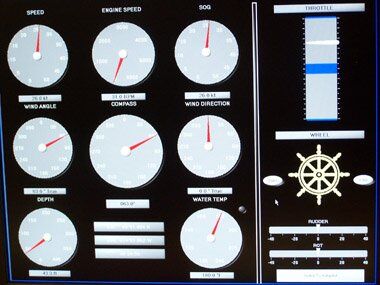B(MC)² — Maritime Simulator Training
BMC has a Buffalo Computer Graphics 3D Maritime Training Simulator. Students learn to pilot a vessel while navigating with Radar and GPS on state of the art Electronic Chart and Display Information System, ECDIS. Students get underway in all kinds of weather and current conditions, day or night, on vessels including an 80’ ketch, a 180’ commercial fishing vessel, a 900’ container ship and many others, without getting wet, cold or seasick! We are able to get underway in San Francisco waters, New York City Harbor, The Chesapeake Bay, and the Lake Erie Quadrangle. This equipment will allow us to offer a USCG RADAR Endorsement Certification Course.
This training includes RADAR training, piloting training, ship handling training, and voyage management training. The simulator also supplements our regular training with hands-on, interactive scenarios designed to test students grasp of skills they have learned in the classroom.
The simulator allows for virtual on the water training year round. The system comes equipped with ECDIS (Electronic Chart Display and Information System) which is a state of the art navigation and chart plotting system, RADAR simulation complete with ARPA (Automatic Radar Plotting Aid) functions, and a visual graphics engine which simulates 360 degree views from the student driven ship. The instructor has complete control over ship traffic, wind, sea state, current, time of day and weather conditions allowing for an infinite number of training scenarios to be created and implemented.
The following images depict a single moment viewed simultaneously on the ECDIS display, RADAR display, and visual display screens.
Here is a brief explanation of the simulator’s components.
The student controls the vessel with a virtual throttle and helm displayed on a fourth monitor. The different ship classes all have programmable parameters allowing the instructor to change the turning radius, acceleration rate, effect of the wind and waves, maximum speed, vessel draft, and many other technical aspects of the ship.
The instructor’s station consists of a CPU and monitor which controls the training equipment, allowing the instructor to modify all aspects of the simulation. The drop down menus give the instructor environmental controls as well as control of up to 99 target ships, and the student’s vessel, if desired.

The ECDIS display of a ship traveling under the Golden Gate Bridge in San Francisco.



